Shrink Wrap Machine Parts: A Complete Guide in 2024
Are you looking for the best way to seal and package your products? Then you may have heard of shrink wrapping machines, but you don't know how this machine works or what major components it consists of? That's okay, this guide will be your best source for gaining important knowledge about the components of a shrink wrap machine!
By reading this 2024 updated guide, you will become a pro in the field of shrink wrapping machines. What are you waiting for?
What are the Different Parts of a Shrink Wrapping Machine?
Below are the important components that make a shrink wrapping machine run smoothly.
Unwind Film Roller
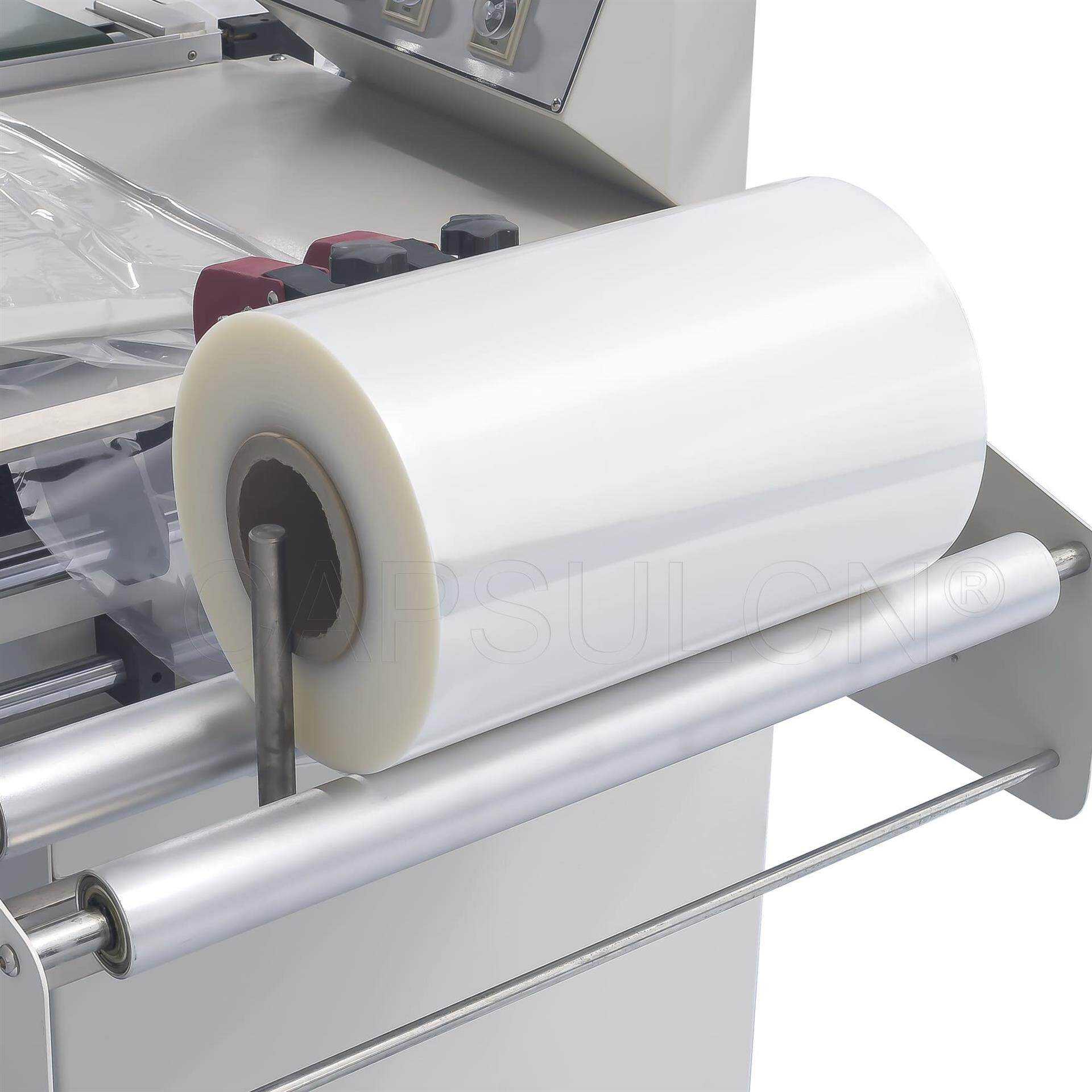
In a shrink wrap machine, the film roll is usually located on the unwind stand. Its function is to smoothly feed the shrink film from the roll into the machine and wrap it around the product. The unwind film roller usually has a rubberized surface that grips the film without damaging it. In addition, its tension can be adjusted to ensure that the film is fed into the machine at the correct speed and with a consistent degree of elasticity.
Film Guide
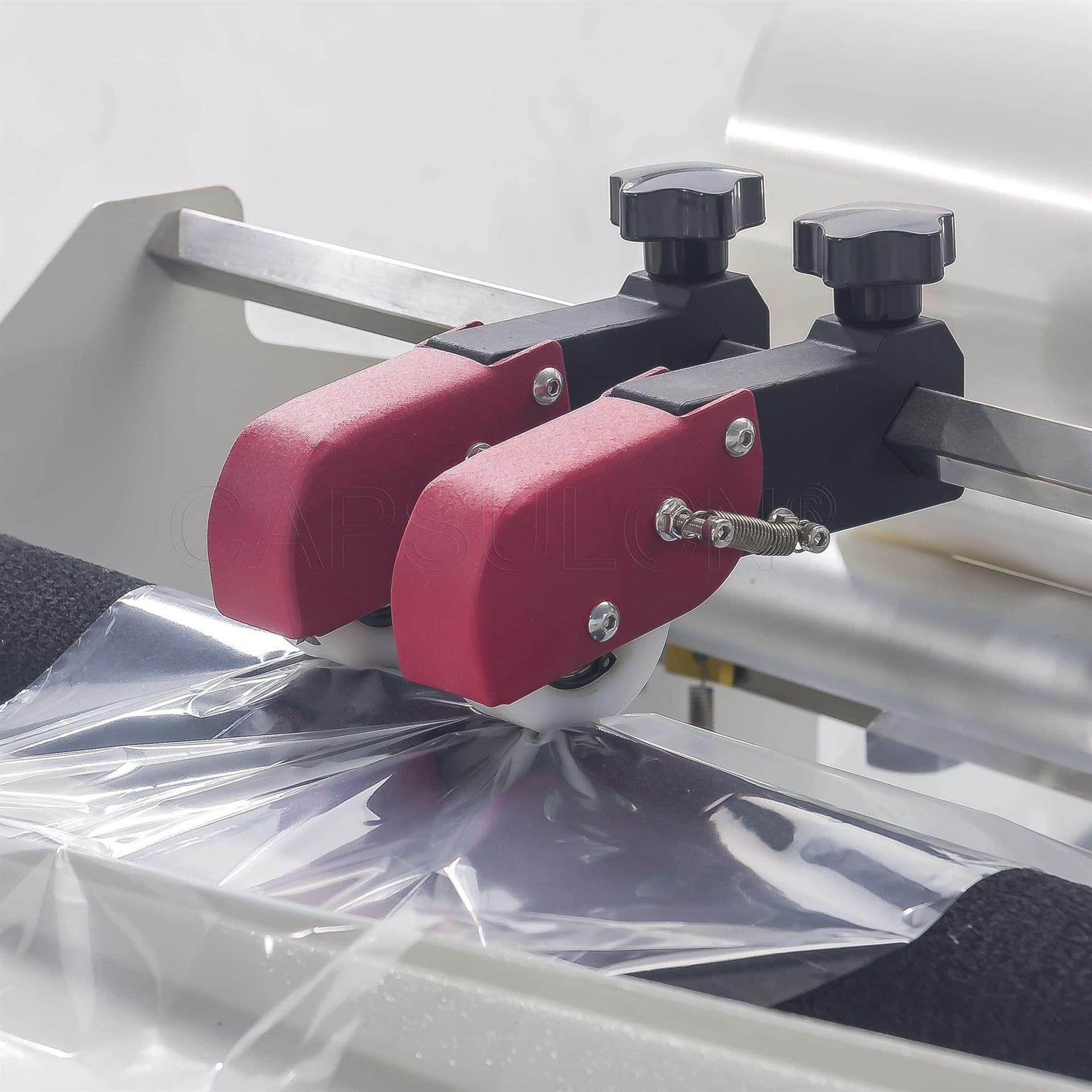
A film guide helps to ensure that the film stays aligned as it moves from the unwind stand to the sealing unit of the shrink wrapping machine. It can be a simple strip device or a more complex system with rollers or sensors. This kind of consistent alignment is essential for the film to form a clean and even seal around the product.
Sealing Bar

Once the product is wrapped in the film, it will move to the sealing station of the shrink wrapper. Here, the sealing bar applies heat and pressure to the two overlapping parts of the film, so that they form a strong seal. A sealing bar is usually made of heat-resistant materials such as metal or ceramics.
According to the shrink wrapper type and sealing technology, different types of sealing bars are available. Common types of sealing bars are L-type, I-type and rotary type.
Conveyor Belt

Basically, every shrink wrapping machine is equipped with a conveyor belt. It is responsible for conveying the product throughout the entire process from sealing to shrinking. This automated transport system greatly reduces the need for manual operation and also improves the efficiency and safety of the product packaging process.
In addition, the conveyor belt is highly adjustable. Depending on your product’s size and the required production volume, you can adjust the height and conveying speed of your conveyor belt.
Shrink Tunnel
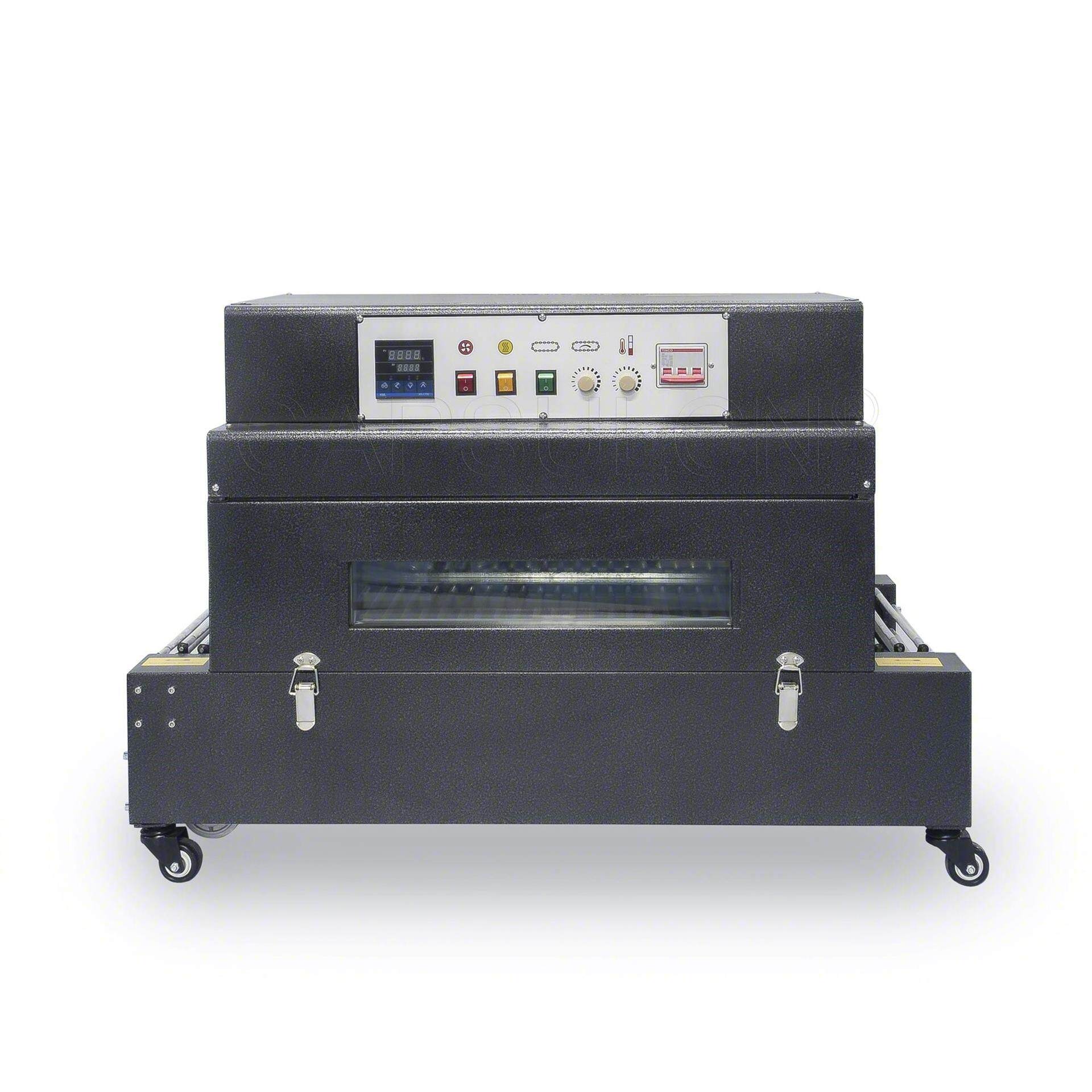
In the entire workflow of a shrink wrap machine, the shrink tunnel is definitely playing the most critical role. It transforms the loose film that wraps the product into a tight and secure package.
Since the shrink tunnel is such an important component, we might as well dig a little deeper into it. Below you will find specific information about the functions of a shrink tunnel.
The shrink tunnel uses different heating methods such as infrared, convection or steam. Each heating method varies in efficiency and suitability for different products and film types.
As the conveyor belt carries the product through the shrink tunnel, the shrink tunnel releases uniform heat, causing the film around the product to shrink and tightly wrap around the product.
In this way, it creates a secure and tamper-proof seal around the outside of the product.
A handheld heat gun may result in uneven heating of the film. But with a shrink tunnel, it can provide consistent heat distribution across the entire product.
Control Panel
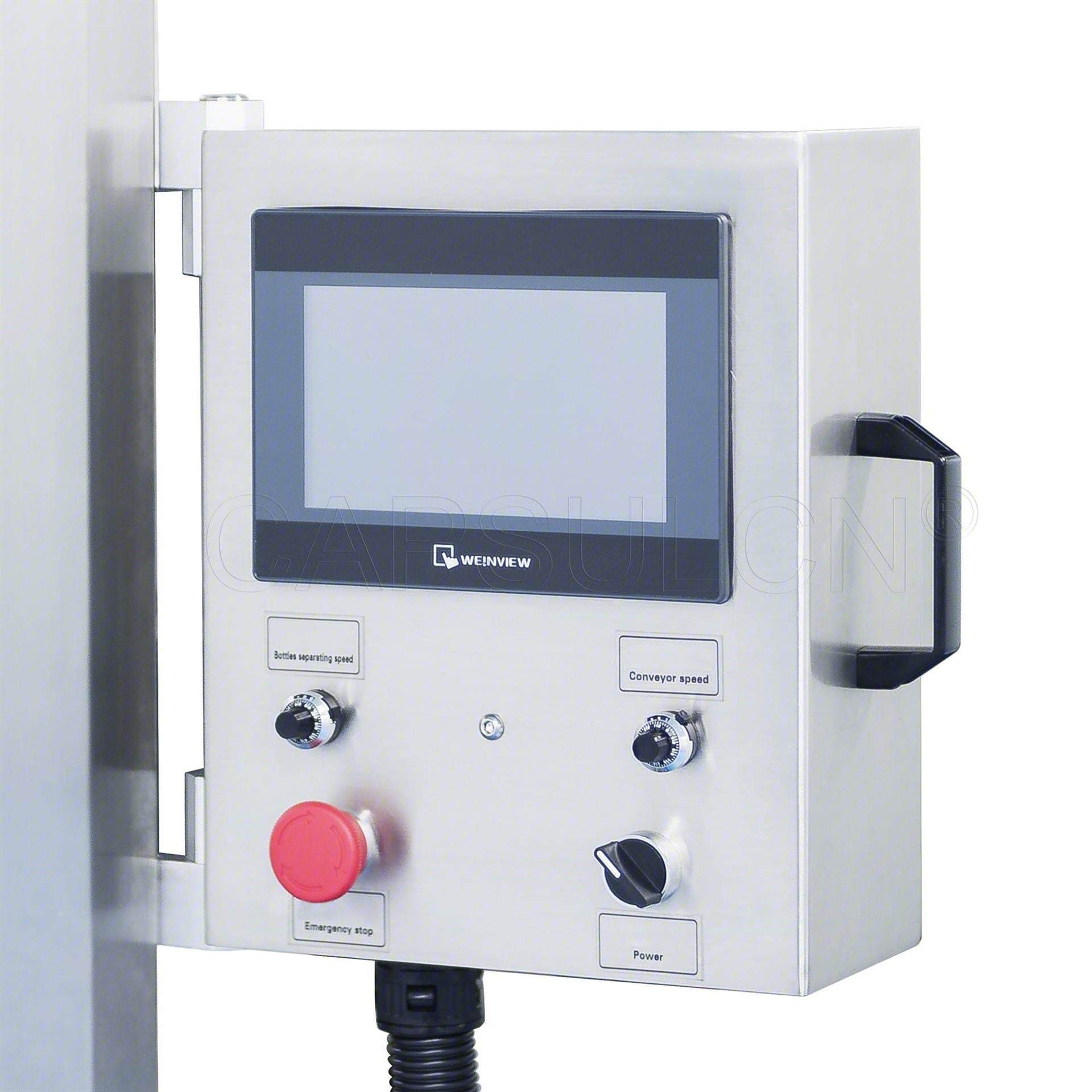
The control panel allows you to set and adjust a variety of important parameters that control your shrink wrapping machine, including sealing bar temperature, shrink tunnel temperature, and conveyor speed.
The control panel also allows you to monitor and troubleshoot the shrink wrapper. The control panel provides a very visual display of the current temperatures of the sealing bars and shrink tunnel for you to monitor. In addition, it will alert you to possible machine malfunctions and provide you with guidance if necessary.
Many control panels are also equipped with emergency stop buttons and overheat protection to help safeguard the operator.
Cooling Zone (Optional)
In pursuit of better packaging results and higher quality finished products, some shrink wrapping machines also have a cooling zone. After the product is heated in the shrink tunnel, it enters the cooling zone. Here, the film cools rapidly. This prevents the product from being deformed by the constant heat.
Imagine a plastic bottle filled with a hot beverage. If it is not cooled down, the bottle will probably deform, right? That's why some shrink wrap machines have to be equipped with a cooling zone.
What Films Can be Used in a Shrink Wrapper?
Now that we've learned what the main components of a shrink wrapping machine are. Let's take a look at what shrink films we can use with these components to create a better packaging effect.
1. Polyethylene Shrink Film

Polyethylene (PE) is one of the cheapest materials for shrink wrap, but it is also the least sturdy and durable. PE shrink film is a good choice for bundling multiple products together or packaging lightweight items. However, it is not recommended for packaging heavy-duty products or those that need high protection.
2. Polyvinyl Chloride Shrink Film
Polyvinyl Chloride (PVC) shrink film is versatile and a popular choice for general purpose applications. It excels in durability, transparency, and shrink performance. However, PVC shrink film is not safe enough for food. Because it releases harmful gases when heated, it is not suitable for packaging food products.
3. Polyolefin Shrink Film

Polyolefin (POF) shrink film is more expensive than PVC shrink film, but it is food-safe and offers greater clarity and shrink performance. Also, POF is more environmentally friendly than PVC, because it is recyclable and produces fewer greenhouse gases during manufacturing. The heat resistance of POF makes it an ideal shrink film for packaging food products.
4. Polypropylene Shrink Film
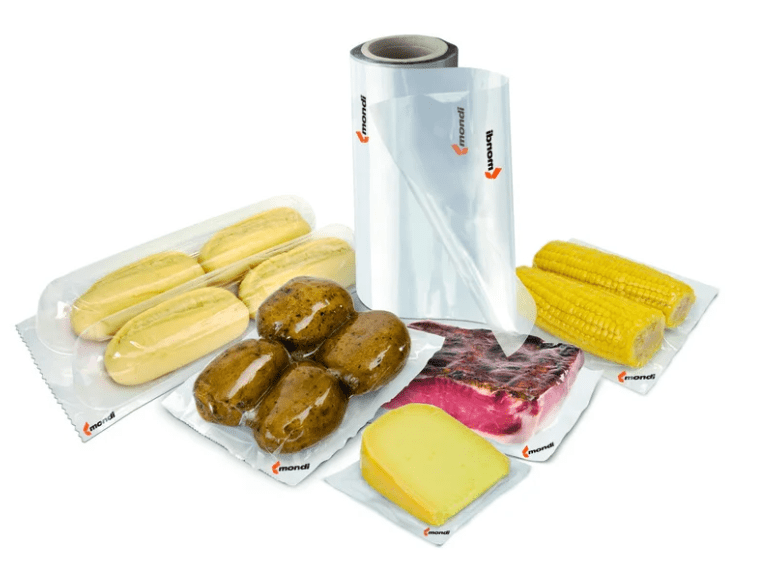
(Image Source: Packaging Gateway)
Compared to PE, polypropylene (PP) offers greater clarity, stiffness, and moisture resistance. This makes PP shrink film ideal for food packaging, medical applications, and industrial products. However, it can be slightly more expensive than polyethylene.
Why Choose iPharMachine for Your Shrink Wrapping Project?
In such a competitive pharmaceutical field, choosing a high quality, reliable shrink wrapper can make or break your pharmaceutical business. iPharMachine, as an experienced shrink wrapping machine manufacturer, can provide the top and most durable shrink wrapping machines in the industry.
In addition, iPharMachine ensures that you can enjoy our equipment and services from anywhere in the world. Our team of local technicians can provide you with prompt, professional assistance whenever and wherever you need it. Choosing an iPharMachine machine is the first step to a successful shrink wrapping project.
Leave your comment
Also Offers


Containment Automatic Capsule Filling Machine SFK-703

Fully Automatic Dosator Capsule Filling Machine CZ-40

Our Team
As an expert in the pharmaceutical and pharmaceutical packaging industry, iPharMachine has provided solutions for hundreds of pharmaceutical and health product manufacturers for 17 years. By visiting customers, we get good reviews from our customers.
- info@ipharmachine.com
- English Español Deutsche







